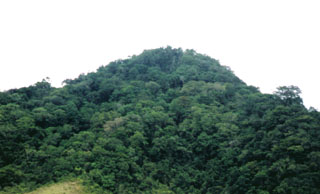Report on Leroboleng (Indonesia) — July 2003
Bulletin of the Global Volcanism Network, vol. 28, no. 7 (July 2003)
Managing Editor: Edward Venzke.
Leroboleng (Indonesia) June-July ash plumes reported by pilots may be the first eruptions in 122 years
Please cite this report as:
Global Volcanism Program, 2003. Report on Leroboleng (Indonesia) (Venzke, E., ed.). Bulletin of the Global Volcanism Network, 28:7. Smithsonian Institution. https://doi.org/10.5479/si.GVP.BGVN200307-264200
Leroboleng
Indonesia
8.365°S, 122.833°E; summit elev. 1095 m
All times are local (unless otherwise noted)
The Darwin Volcanic Ash Advisory Center (VAAC) provided a series of pilot reports on Leroboleng. Confirmation from observers on the ground are pending.
At 1038 on 26 June 2003 aviators reportedly saw an ash plume rise to ~1.8 km altitude. An aircraft crew advised that the activity appeared to be increasing. Ash was not visible on satellite imagery. Another report stated that an ash plume was visible above Leroboleng at 1606 on 14 July at ~2.5 km altitude. Ash was not visible on satellite imagery and at that time VSI personnel could not observe the volcano. An alleged eruption on 29 July at 0900 lasted 10 minutes and sent an ash cloud to ~7.3 km altitude.
Geological Summary. Leroboleng volcano, also known as Lereboleng or Lewono, lies at the eastern end of a 4.5-km-long, WSW-ESE-trending chain of three volcanoes straddling a narrow peninsula in NE Flores Island. The summit of Gunung Leroboleng contains 29 small fissure-controlled craters, two containing lakes. A small lava dome occupies one of the craters. Most of the craters originated along three N-S-trending fissures immediately east of the summit of the volcano. The largest crater, 250-m-wide Ili Gelimun, is located SSE of the summit and fed lava flows from a lower south-flank vent. Explosive eruptions were reported from Burak crater during the 19th century.
Information Contacts: Darwin Volcanic Ash Advisory Centre (VAAC), Bureau of Meteorology, Northern Territory Regional Office, PO Box 40050, Casuarina, NT 0811, Australia (URL: http://www.bom.gov.au/info/vaac/).

